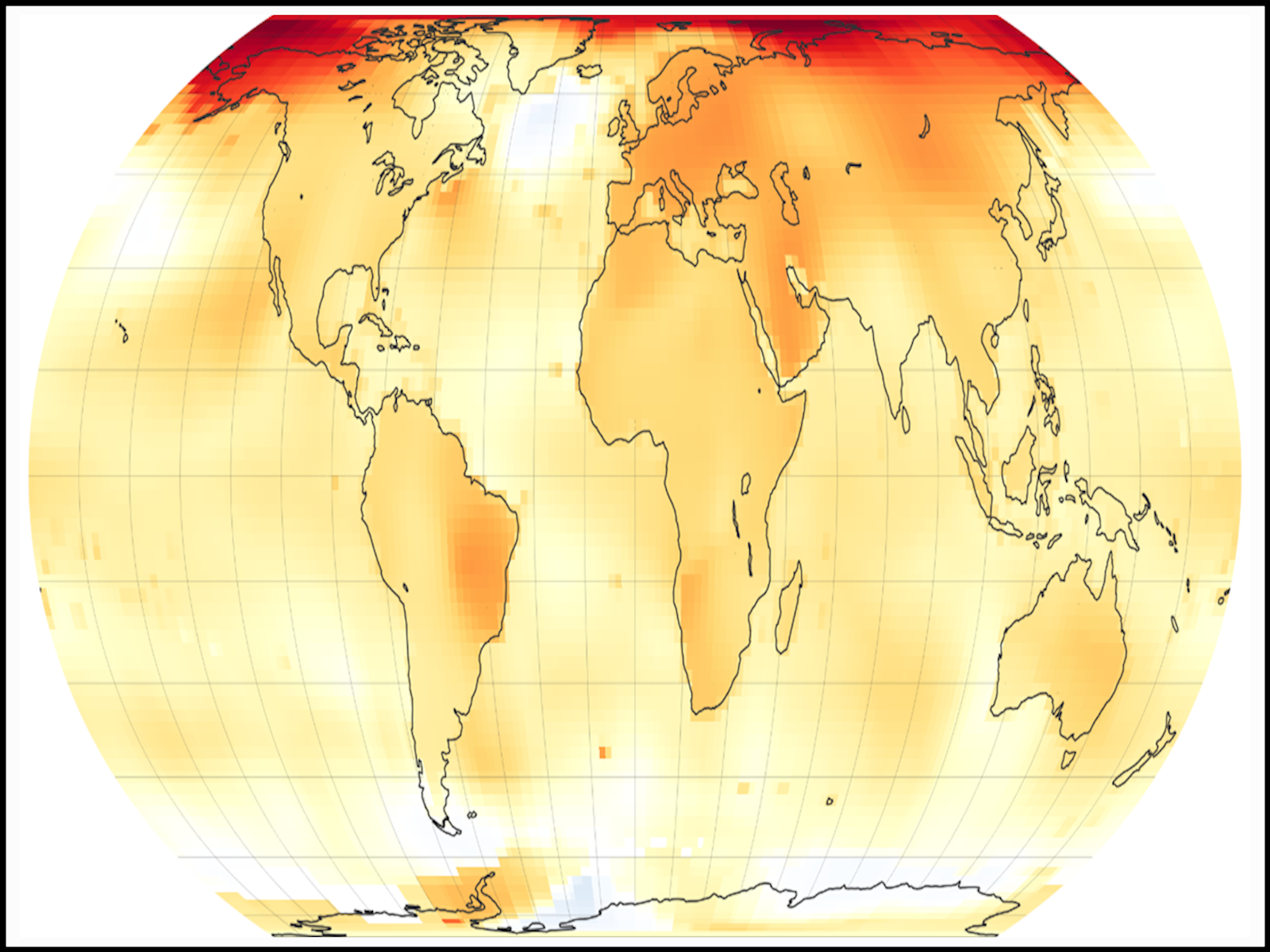Identifying the Necessary Ensemble Size for Accurately Estimating Changes in Extremes
Ensembles of 20–25 members, smaller than traditional large ensembles, can accurately represent changes in extremes of temperature and precipitation

Accurately estimating changes in extremes requires many simulation runs, but not as many as previously thought.
(Graphic: NASA)
The Science
Estimating future extremes in temperature and precipitation is important for understanding a changing climate. Researchers used existing large ensembles and statistics to test the precision of estimates of changes in extremes based on different ensemble sizes. They found that a small ensemble (five members) allows them to anticipate the reduction of errors in estimating extreme changes as the ensemble size increases. The main result is that the errors of an estimate with only 20–25 members remain within the error bounds defined by a full ensemble of 40 or 50 members.
The Impact
Over the last few years, scientists and modelers have recognized the importance of exploring the noise in the climate system by running large-size ensembles with a climate model. Accordingly, modeling centers budget computational resources to run these expensive experiments. The size of these ensembles is generally around 40 or 50 runs. This paper shows that for many questions related to the characterization of temperature and precipitation extremes, running ensembles larger than 25 members only marginally increases the data’s value. This result should be valuable for planning experiments and computer time allocations for large Earth system model setups.
Summary
Researchers considered the problem of estimating the ensemble sizes required to characterize mean changes and their variability for several extreme metrics. They took the perspective of a modeling center wanting to a priori estimate these sizes based on an existing small ensemble (5 members). They found that the available 5-member ensemble enables error anticipation when estimating temperature and precipitation extremes as a function of ensemble size using a model variability estimation formula. For a range of spatial scales, temporal scales, forcing levels, and two models, an ensemble size of 20 or 25 members appears to provide estimates for the extreme metrics considered that remain within small absolute and percentage errors. Additional members add only marginal precision to the estimate. This remains true when estimating variability in these extremes and how they might change under a high-emission scenario. While applications and metric definitions requiring larger statistical power and therefore larger ensemble sizes exist, these results suggest that an effective estimate of both mean changes and variability can be achieved with sizes below 30 members for a wide range of problems and scales. This smaller size may save computational resources for addressing additional sources of uncertainty in future climate projections.
PNNL Contact
L. Ruby Leung, Pacific Northwest National Laboratory, ruby.leung@pnnl.gov
Funding
This study was supported by the Energy Exascale Earth System Model (E3SM) project funded by the U.S. Department of Energy (DOE), Office of Science, Biological and Environmental Research program. MW was supported by the CASCADE project, also funded by the DOE, Office of Science, Biological and Environmental Research program. Pacific Northwest National Laboratory is operated by Battelle for DOE under Contract DE-AC05-76RLO1830. Lawrence Berkeley National Laboratory is operated by DOE under Contract No. DE340AC02-05CH11231.
Published: January 5, 2022
C. Tebaldi, K. Dorheim, M.Wehner and R. Leung, “Extreme Metrics from Large Ensembles: Investigating the Effects of Ensemble Size on their Estimates”, Earth Syst. Dynam., 12, 1427–1501, (2021), [DOI:10.5194/esd-2021-53].